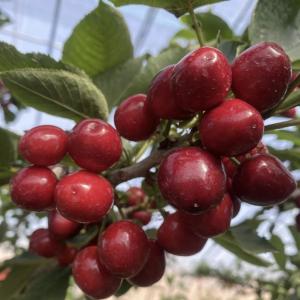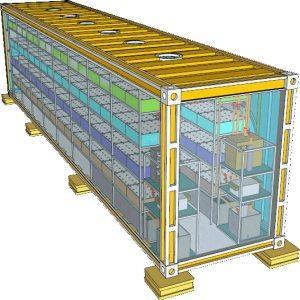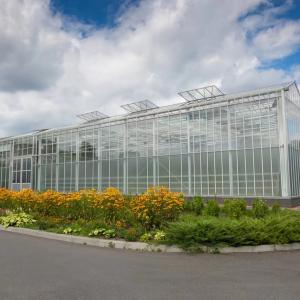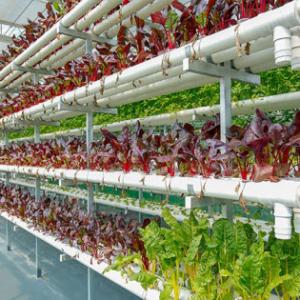Advantages of Polycarbonate Sheet Greenhouses: An Innovation in Modern Gardening
Polycarbonate sheet greenhouses have become increasingly popular in modern gardening practices due to their numerous advantages over traditional glass or plastic-covered structures. These greenhouses provide an ideal environment for plants, allowing them to thrive and grow in a controlled setting.
Polycarbonate sheet greenhouses offer a durable and lightweight alternative to traditional greenhouse materials. The transparent polycarbonate sheets allow ample sunlight to penetrate while protecting the plants from harmful UV radiation. These structures provide an excellent growing environment for a wide range of crops, from delicate flowers to hearty vegetables.
Benefits of Polycarbonate Sheet Greenhouses
Durability and Impact Resistance
Polycarbonate sheets are known for their exceptional strength and impact resistance. Unlike glass, which can shatter upon impact, polycarbonate sheets can withstand hail, heavy snow, and even minor collisions. This durability ensures a longer lifespan for the greenhouse and reduces the risk of damage to the plants inside.
Excellent Light Transmission
One of the key advantages of polycarbonate sheet greenhouses is their superior light transmission properties. The transparent sheets allow a high percentage of sunlight to enter the structure, providing plants with the necessary light for photosynthesis. The diffused light inside the greenhouse ensures uniform illumination, reducing the chances of shadowing and promoting even growth.
Energy Efficiency
Polycarbonate sheets offer excellent thermal insulation properties, reducing heat loss during colder months and preventing excessive heat build-up in warmer climates. This energy-efficient design helps maintain a stable and favourable temperature inside the greenhouse, creating an optimal environment for plant growth.
UV Protection
Polycarbonate sheets are typically coated with a UV-resistant layer, providing effective protection against harmful ultraviolet rays. This coating helps prevent sunburn and damage to plants, ensuring their health and vitality.
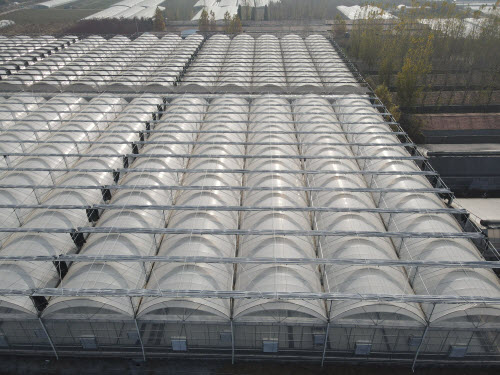
Factors to Consider in Polycarbonate Sheet Greenhouse Design
Size and Layout
Determining the size and layout of your polycarbonate sheet greenhouse is essential for maximizing space utilization and accommodating your desired plant capacity. Consider the available area and plan the dimensions accordingly. Ensure that there is sufficient space for walkways, shelving, and other structural elements. Additionally, consider the potential for future expansion.
Orientation and Location
The orientation and location of your greenhouse can significantly impact its performance. Ideally, the greenhouse should be situated in an area that receives maximum sunlight exposure throughout the day. South-facing orientations are preferred in most regions. Avoid shading from nearby trees or buildings, as this can obstruct sunlight. Additionally, consider accessibility to water and electricity sources.
Structural Considerations
The structural design of your polycarbonate sheet greenhouse should provide stability, durability, and proper load-bearing capacity. The framework material, such as aluminum or galvanized steel, should be chosen based on the local climate conditions and the intended lifespan of the structure. Ensure proper reinforcement and anchoring to withstand winds and heavy snow loads.
Ventilation and Airflow
Adequate ventilation and airflow are crucial for maintaining a healthy growing environment. Proper airflow helps control temperature, humidity, and carbon dioxide levels, preventing the build-up of excessive heat and reducing the risk of plant diseases. Incorporate vents, louvers, and fans in the greenhouse design to facilitate air exchange and circulation.
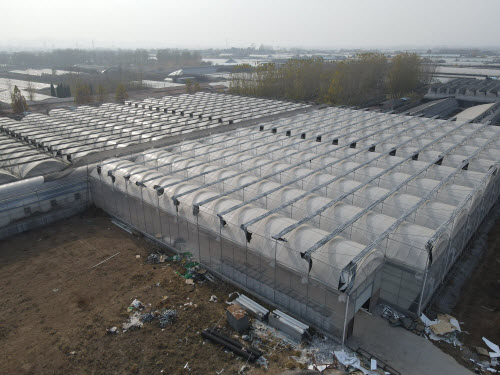
Design Ideas for Polycarbonate Sheet Greenhouses
Traditional Greenhouse Designs
Traditional greenhouse designs, such as gable or even-span structures, provide a classic and functional option for plant cultivation. These designs feature a peaked roof, allowing for good air circulation and efficient water drainage. They can be easily customized to accommodate the desired size and layout.
Lean-To and Attached Greenhouses
Lean-to and attached greenhouses are built against an existing structure, such as a house or a wall. These designs maximize space utilization and provide convenient access to utilities. Lean-to greenhouses benefit from the shared wall, which acts as a heat sink, providing thermal stability.
Geodesic Dome Greenhouses
Geodesic dome greenhouses are becoming increasingly popular due to their structural strength and energy efficiency. These designs feature a spherical shape composed of interconnected triangles, providing excellent stability and load-bearing capacity. Geodesic domes offer efficient space utilization and have superior airflow and ventilation properties.
Multi-Span and Commercial Greenhouses
Multi-span and commercial greenhouses are suitable for larger-scale plant production. These designs consist of multiple interconnected bays or spans, allowing for efficient operation and management. Commercial greenhouses often incorporate advanced systems for temperature control, irrigation, and lighting to optimize plant growth.
Vertical Farming and Aquaponics Systems
Vertical farming and aquaponics systems maximize space utilization by growing plants vertically. These innovative designs utilize stacked trays or shelves, with each level dedicated to plant growth. Vertical farming can be integrated with hydroponic or aquaponic systems, allowing for efficient nutrient delivery and water conservation.
Design Features for Optimal Plant Growth
To create an environment that fosters optimal plant growth, consider incorporating the following design features into your polycarbonate sheet greenhouse:
Light Diffusion and Shading Options
To ensure optimal light distribution and reduce the intensity of direct sunlight, polycarbonate sheets can be treated with light-diffusing coatings. These coatings scatter the incoming sunlight, allowing it to reach plants from different angles and reducing the risk of sunburn or uneven growth. Additionally, shading options such as retractable screens or shade cloths can be installed to regulate light levels during hot summers or for shade-loving plants.
Thermal Insulation and Heat Retention
Proper thermal insulation is essential for maintaining a stable and favorable temperature inside the greenhouse. Double-layered or multi-wall polycarbonate sheets with air pockets provide effective insulation, reducing heat loss during colder months. Thermal curtains or insulating blankets can be used to cover the greenhouse during the night, preventing heat from escaping. Incorporating thermal mass materials, such as water barrels or concrete flooring, can help retain heat and stabilize temperature fluctuations.
Water Management and Irrigation Systems
Efficient water management and irrigation systems are crucial for providing plants with an adequate and controlled water supply. Installing gutters and downspouts can collect rainwater for irrigation purposes, reducing the reliance on external water sources. Implementing a drip irrigation system or automated sprinklers ensures efficient water distribution while minimizing wastage. Consider incorporating water recycling systems to reuse and conserve water within the greenhouse.
Automation and Control Systems
Automation and control systems streamline greenhouse operations and help maintain optimal growing conditions. Environmental control systems can monitor and regulate temperature, humidity, and CO2 levels. Automated vents, fans, and shades can be programmed to adjust based on preset parameters, ensuring proper ventilation and climate control. Additionally, integrating sensors and timers with irrigation systems can automate watering cycles, enhancing efficiency and plant health.
Sustainability and Eco-Friendly Considerations
Polycarbonate sheet greenhouses can be designed with sustainability in mind, minimizing their environmental impact. Using recycled materials for the greenhouse structure reduces waste and promotes resource conservation. Implementing rainwater harvesting and storage systems allows for sustainable water usage. Incorporating solar panels on the greenhouse roof enables the generation of renewable energy to power lighting, ventilation, and automation systems. Exploring sustainable heating and cooling options, such as geothermal or biomass systems, reduces reliance on fossil fuels and promotes eco-friendly practices.
Maintenance and Upkeep of Polycarbonate Sheet Greenhouses
Regular maintenance is crucial to ensure the longevity and performance of polycarbonate sheet greenhouses. Cleaning the sheets periodically with a mild detergent and soft brush removes dirt and debris, allowing maximum light transmission. Avoid using abrasive materials or harsh chemicals that can damage the sheets. Inspecting the structure for any signs of wear or damage is essential. Promptly replace any cracked or damaged sheets to maintain proper insulation and structural integrity.
